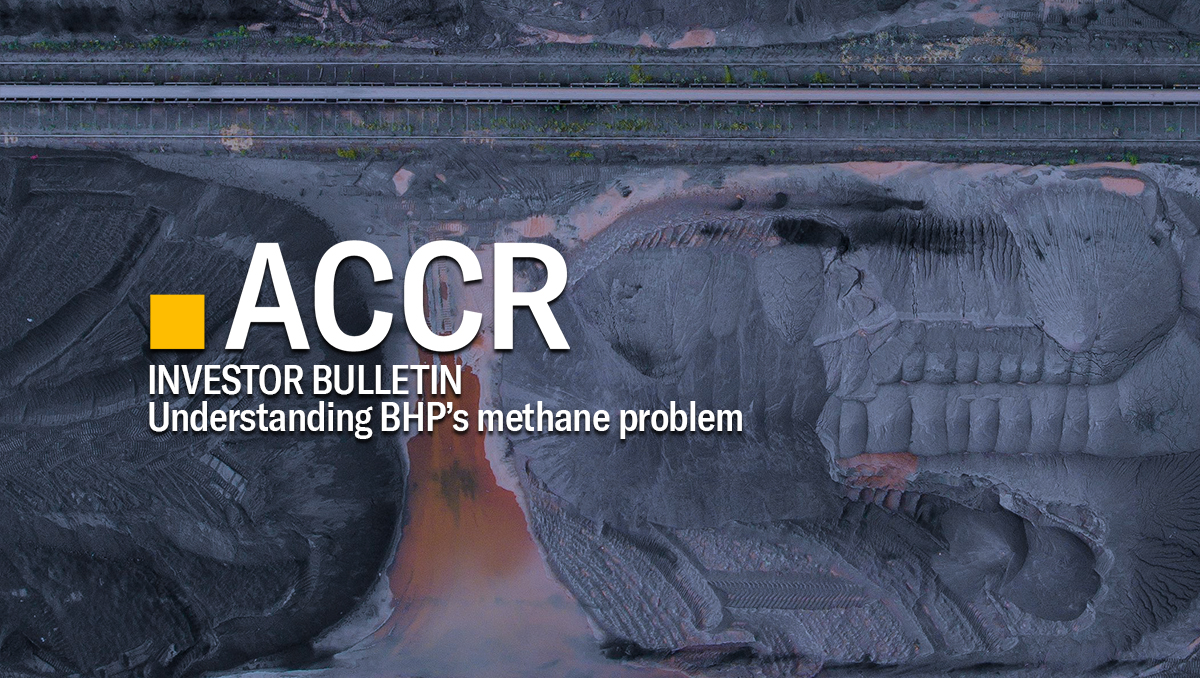Investor Insight Investor Bulletin: Understanding BHP’s methane problem
Preliminary findings from a new online platform launched last week by the Superpower Institute show that Australian fossil fuel producers are emitting twice as much methane as reported under the national framework. Accurate measurement and reduction of methane emissions is critical: methane is potent greenhouse gas that has over 80 times the warming potential of CO2 over a 20-year period. [1]
Data from OpenMethane shows that 11 of Australia’s top twenty methane hotspots are in the Bowen Basin, where BHP operates a number of metallurgical coal mine operations, including in Moranbah, Queensland (the Goonyella Riverside mine), and Winchester, Queensland (the Peak Downs and Saraji sites).
Concerningly, BHP’s 2024 Climate Transition Action Plan (CTAP) fails to sufficiently address methane emissions from its coal operations. This magnifies the issue of the CTAP’s overall lack of metallurgical coal disclosure.
- BHP has acknowledged that as it mines deeper coal seams, methane intensity is likely to increase [2]. However, its CTAP makes no mention of the specific emissions levels at its coal mines, nor does it lay out concrete steps to reduce or accurately measure these emissions.
- OpenMethane’s cutting-edge satellite technology demonstrates that methane emissions can be measured with far greater accuracy than previously assumed. While BHP’s CTAP discusses methane emissions estimate methodology updates, these methods are being reviewed by the government due to concerns that current methane reporting methods could allow for selective sampling or manipulation [3]. As it stands, there is no requirement for public or independent sampling, leaving investors in the dark about the accuracy of company-reported emissions.
- BHP plans to mine metallurgical coal for many decades, including potentially until 2116 [4]. Investors require clarity both on the extent and intensity of the methane emissions from the company’s metallurgical coal sites, and how it plans to address and reduce these emissions.
What can investors do?
This is a pivotal moment for investors to engage with BHP on its methane emissions reporting practices, and steel decarbonisation strategy more broadly. This will ensure the company is positioned for success in a low-carbon future. Investors can:
- encourage BHP to enhance transparency on methane measurement and reporting by adopting independent, satellite-based measurements like those provided by OpenMethane, plus local validation.
- question BHP’s statements in its CTAP suggesting that pre-mine drainage of methane at its open-cut mines is not feasible, and encourage pre-mine methane drainage trials to test for and measure viability.
- request a clear plan from BHP regarding its metallurgical coal assets, demonstrating alignment with the global transition to a low-carbon economy. This should include a detailed approach to managing long-term climate risks while seizing opportunities in steel decarbonisation.
ACCR believes there is sufficient reason to vote against BHP’s 2024 Climate Transition Action Plan (CTAP). For ACCR’s full analysis of BHP’s 2024 CTAP see here.
And you can view the Investor Webinar ACCR held on the CTAP here.
ACCR is available to discuss any of these items further, and can also recommend methane experts in Australia and globally for any investors seeking to understand the issue in more detail.
IEA, Methane and climate change, 2021.\ ↩︎
BHP 2024 CTAP, p16.\ ↩︎
Australian Government, Australian Government response to the Climate Change Authority’s 2023 Review of the National Greenhouse and Energy reporting legislation, August 2024, p.11.\ ↩︎
Queensland Government, Peak Downs Continuation Project, 2023. ↩︎
